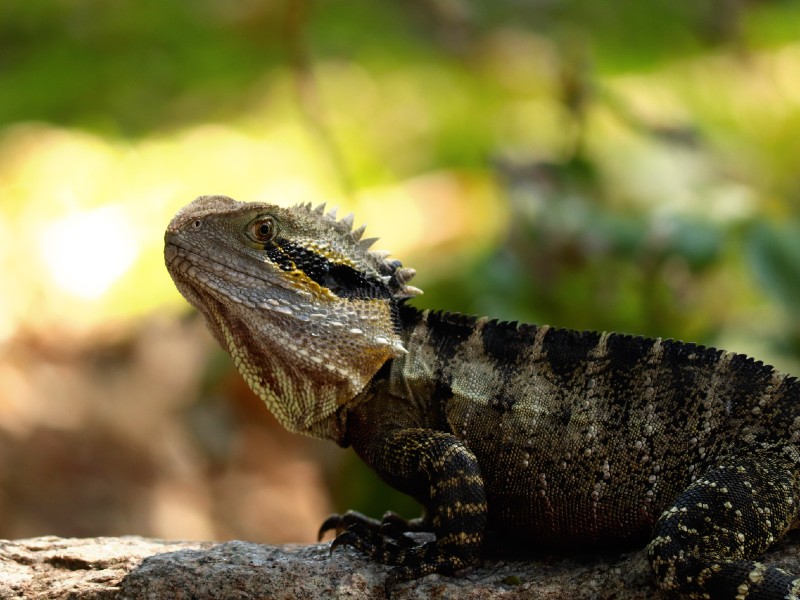
The Australian Water Dragon belongs to the genus Physignathus as described by George Cuvier in 1829. The term Physignathus actually translates to “puff-cheek” as it refers to the bulging appearance of the throat and lower jaw of the dragon. This reptile is Australia’s largest agamid lizard and has been kept in Australian Zoo collections, in private keepers’ homes, and used in private trade.
This lizard is large and sturdy and lives along the waterways of the Eastern Coast of Australia down as far as the South Coast. They grow over one meter long and are considered to be the largest member of the dragon family, Agamidae, in Australia. They can live up to 25 years. They have great display value as their habitats include aquatic, terrestrial, burrowing, and arboreal adaptations.
Appearance
One of the most striking characteristics of the Water Dragon is the distinctively deep and angular head, along with a nuchal crest of spinose scales. These scales join the vertebral crest that extends down the length of its body to the tail. Some enlarged spinose scales are visible across the lateral surface but are unevenly distributed amongst regular keeled scales.
The Water Dragon has large jowls, while its ear remains exposed and measures almost as much as its eye. Its dorsal ridge and tail are compressed laterally. This lizard has strong, robust limbs and particularly long toes on the hind legs. If by accident or due to nature they shed their tail, then they can easily regenerate it.
This lizard has different colors depending on the species. This particular species has a grey to brownish-grey color above, with patterns of black stripes along the dorsal ridge and down its tail. You will see a dark stripe stretching horizontally from the eye back over to the tympanum and extending down the neck. Its limbs are largely black with a few spots and stripes of grey here and there. While its ventral surface is yellowish-brown, the chest and upper belly turn bright red when males mature.
One of the main features of the Australian Water Dragon is its spiny scales that resemble crests on the head. The angle of the head is quite steep, starting from the top and ending at the tip of the snout. The scales on the head join the vertebral crest, which extends down to the dragon’s long tail, which, like many other lizards, can be regenerated.
Care Guide
The Australian Water Dragon is not a commonly kept pet. When you want to keep one as a pet, you must be aware of many do’s and don’ts. Some of the main things are housing and health.
Enclosure
This lizard grows quite large in the wild as they are mainly outdoor creatures. This is one of the most essential parts as Water Dragons need very large enclosures, equipped with a large water area for swimming along with appropriate furnishings. Additionally, you should provide adequate ventilation, heating, and lighting. It is better to consult an experienced, professional reptile store or enclosure builder who can give detailed advice on the setup.
Size
You should always build the biggest enclosure as no enclosure can be too big for this lizard. While a small enclosure is suitable for a hatchling for an adult lizard, the minimum enclosure size should be 3m x 2m. Also, a large enclosure will be much more cost-effective eventually. You could build a vivarium with a swinging front door and adjustable air vents with opaque sides. A lizard feels open to threats if it is a fully transparent enclosure. A single water dragon needs at least a 4- 5 feet enclosure, 24 inches deep and 36 inches wide.
Setup
If you are creative, then you can also add a lot of vegetation. Since these lizards often inhabit forests that are close to rivers or streams, adding some greenery and a water source will provide the right amount of humidity. Add a moisture-absorbing substrate at the base, such as coarse wood chips or a fertilizer-free soil and peat moss mix. This base holds on to the moisture keeping the humidity levels high.
Add climbing surfaces, like large tree branches, chunks of cork wood, and vines. Arrange them horizontally and apart from each other, creating a network of paths so that your lizard can easily maneuver itself and explore the area. You should also create some shelter, like a reptile hide box. You can use plants as well, both live and artificial. Live plants provide humidity, but plastic ones are easier to maintain and clean. Throw in some chunks of resting rocks made of natural stone or even slate as they retain heat for some belly warmth.
Temperature & Lighting
Since Australia experiences intense heat, you need to provide a similar environment for the Water Dragon as anything otherwise could be detrimental to its health. They thermoregulate by moving to different parts of the enclosure, so it is necessary to create a temperature gradient where one side of the tank is hotter than the other.
You could introduce a basking lamp to raise temperatures between 95 and 110 degrees Fahrenheit. In case your lizard isn’t spending enough time in the basking area, dial back the heat a bit to a lower range. Their body temperature usually ranges between 26.9 – 33.2º C with a mean of 30.1º C. So, you should equip outdoor enclosures with a supplementary heated hide that can also provide refuge on cold days and nights.
If your enclosure is indoors, keeping a wide thermo-gradient with a minimum air temperature of 25oC and a maximum of 32oC is essential. In case you have more than one lizard, then you should provide more than one basking site. This reduces the instances of territorial behavior over basking opportunities. As for the basking area, allow the lizard to get directly below a heating fixture, such as a heat lamp, within a sufficient distance. If your bulb is 160w Oz, then a 40cm distance is sufficient. Cover it with a mesh to prevent burns. You should thermostatically control your heating equipment to prevent overheating and fire risk.
The Water Dragon benefits from a daily rise and drops in temperature as it simulates natural cycles. Lower the average temperature during the cooler months to simulate seasonal change for the animals as it benefits breeding. You can also use UV fluorescent batons and a ceramic heater or globe for lighting. Some other options like self-ballasted Mercury Vapour or Metal Halide spotlights provide both heat and light. This will provide an adequate balance of UVA/UVB radiation for vitamin D generation and help metabolize calcium.
Feeding
Australian Water Dragons are primarily carnivores, but they have omnivorous tendencies. They tend to eat different types of vegetation alongside meat, which is an essential part of their diet. In the wild, you will rarely find these Water Dragons eating vegetation as they always hunt for meat, including small mammals, rodents, invertebrates, fish, or even at times, birds. You should feed the Water Dragon a diet of live brown crickets, mealworms, black crickets, and brown crickets in captivity. You could also go for cockroaches, mealworms, waxworms, and beetles.
For increased nutrition and vitamin content, you can gut-feed the crickets by allowing them to feast on healthy greens such as lettuce and then feed them to your dragon. Your lizard absorbs the nutrients that the insects get from the greens. You can balance out the phosphorus levels in cricket by dusting them with a calcium supplement. This prevents any kind of metabolic bone disease. You can provide them with some shredded greens like collards, carrots, squash, beans, and fruits when it comes to vegetation—juveniles, like smaller insects, like flies or mosquitoes.
Lifespan & Health Concerns
The Australian Water Dragons grow up to 36 inches when they are males and 24 inches when they are females. Their tail primarily adds to two-thirds of their body length. With proper care and nutrition, these hardy and resilient reptiles live longer than other lizards up to at least 20 years. A particularly healthy lizard can also live past 25 years.
Common Health Problems
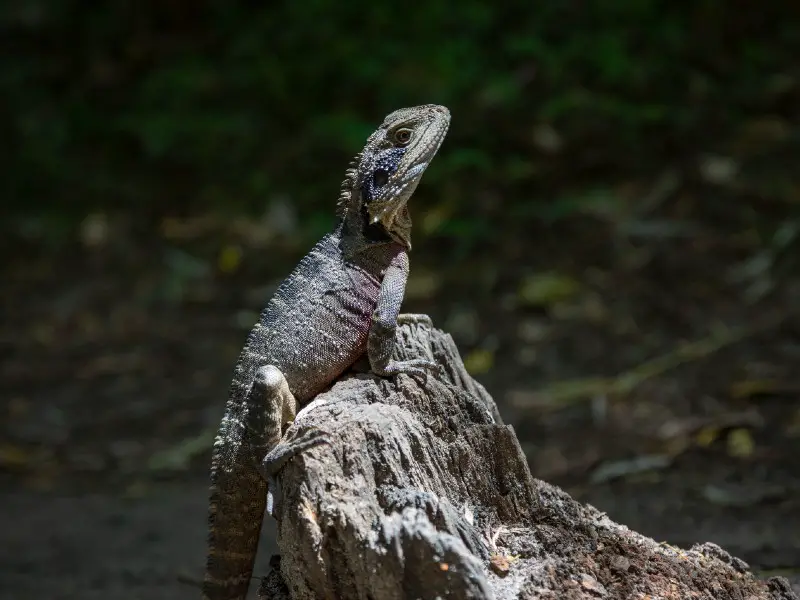
Obesity
Since they are active eaters, anything from insects to various kinds of vegetation will act as a food source. So when it comes to feeding time, there is a good chance that you will overfeed them if you are not careful with their diet. This can result in an obese animal. Like other animals, obesity is just a precursor to riskier and life-threatening diseases. So, do not overfeed your dragon.
Bone disease
Like other reptiles and lizards, the Water Dragon suffers from metabolic bone disease. When the calcium levels drop in the dragon’s bloodstream, this can pose a problem. This is also caused by higher phosphorus levels that are present in the insects they feed on. Metabolic bone disease seriously weakens the Water Dragon’s bones, causing deformities, fractures, and general muscle weakness.
Respiratory illness
The environments that these dragons live in should be clean and balanced. In the absence of such, they can suffer from respiratory illnesses if they live in extremely cold or damp areas. Respiratory illnesses often cause weaknesses, bad appetite, and breathing difficulties. If you find mucus when the Water Dragon is wheezing, then it is an indication of respiratory infection.
Behavior
Social Behavior
In the wild water, dragons are very sociable creatures and live in large groups. However, they can fight and exhibit aggression in captivity due to the reduced territorial area, especially the males. To reduce substantial damage and trauma, keep the males in separate enclosures, especially around a breeding season.
The losing male cannot really hide and will be badly harassed. It may even stop eating. The females are usually fine, even in larger groups with a single dominant male. All the dragons need to get enough food, as a hierarchy even among the females can result in bullying.
Sleeping habits
Since the Australian Water Dragons are diurnal reptiles, they are most active during the day when they hunt and do different activities. They sleep and rest at night. They are most likely to stay awake for about 12 hours and sleep the rest of the day. In dry climatic conditions, they sleep in the water, with their nostrils exposed so that they can breathe while asleep. They exhibit the same behavior during the winter season. They use the deep natural warmth of the water compared to the open air, which is comparatively colder.
Water
This species of lizard is a heavy water drinker. Besides this, they also love dwelling in the water, soaking their bodies. This helps them to hydrate and moisten their sturdy skin. Having a large water area fulfills this requirement. Keep a large plastic tub full of water to satiate the dragon’s thirst if you have an indoor enclosure. You can also move this in and out of the enclosure when cleaning. If the water area is at least big enough for the dragon to fully submerge itself, then even better.
The large bowl or tub allows them to have a good supply of water to drink. The Australian Water Dragons spend an entire night sleeping in their water bowls, depending on the season and on the temperature. Ensure that they can easily glide in and drink water as well as glide out. They can drown surprisingly easily, so a sloping bank will enable easier movement.
Development and Reproduction
The Australian Water Dragon reaches sexual maturity at 4 to 5 years of age when it comes to development. Yet, they are not at the peak size for reproduction. Females should be made to wait an extra year and males for reproduction when they are about 9 inches long. Females can reproduce almost indefinitely even after crossing 25 years of age. In captivity, the males can reach maturity in captivity as early as two years compared to the five years in the wild as they grow quicker.
After the brumation or ‘cool down’ period, the sexual organs produce sperm. Water Dragons, like other reptiles, exhibit temperature-based sex determination or TSD. This means that the Water Dragon’s sex is determined not by their genetic makeup but by the temperature at which they are incubated. According to some researchers, high Incubation temperatures produce mainly female dragons, while mid-range incubation temperatures produce a male-biased sex ratio.
Breeding
Australian Water Dragons closer to one another in age are easier to breed because a male dragon is always bigger than a female one. Dragons that are not of the same age are also easily bred. In the wild, a male fights or intimidates others by puffing their cheeks to their maximum size for the right to reproduce with the female. In captivity, the reproduction in Australian Water Dragons happens year-round. Breeding usually lasts for a few months until the female is impregnated. Ideally, an impregnated female lays up to 18 eggs at a time.
How to Keep The Australian Water Dragon Safe?
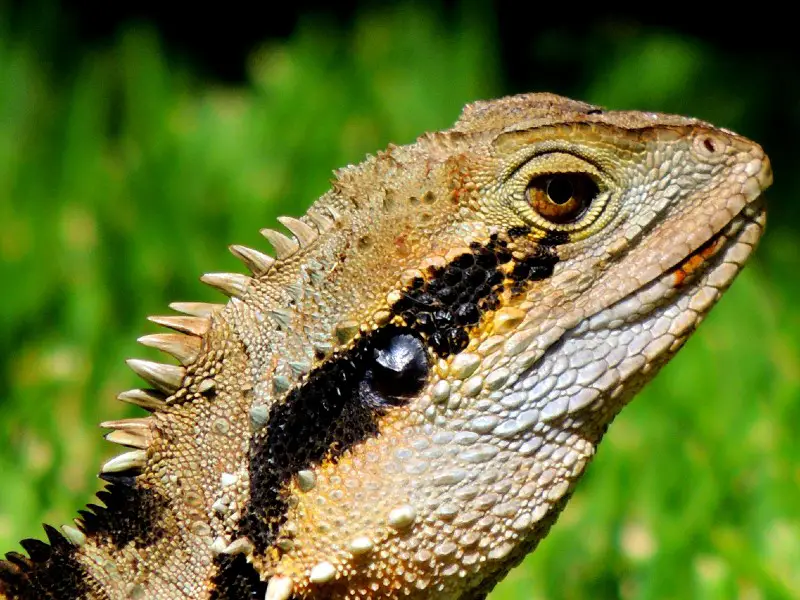
Provide balanced diet
You should take great care to keep your dragon away from illnesses. Arming yourself with some knowledge of illnesses and common health problems minimizes the risk of your reptile suffering. Provide a healthy and balanced diet for your dragon since they feed on almost anything when kept in captivity. Include different kinds of vitamins and minerals that improve its health. While insects are the primary food, add some supplements such as fruits and vegetables because of their vitamin contents.
Safe enclosure
House the dragon in a suitable environment that has the right temperature and humidity levels. This prevents the buildup of harmful bacteria and molds in their enclosure. You should regularly clean their habitat and make it illnesses free.
Predators
The juvenile Water Dragon often gets attacked by brown tree snakes, which hunt for them in the tree branches as they sleep. You also have Death Adders, Acanthophis Antarcticus, etc., that feast on these dragons. Additionally, hatchlings get cannibalized by adult Water Dragons in some wild populations, so constantly check on the dragons.
Check for problems like old bits of skin that stick to the hide or constricting bits around the tail or toes, visible wounds, damaged toes, claws, or tail tips, and treat immediately.
Does the Australian Water Dragon Pose a Threat to Humans?
While the Australian Water Dragon does not necessarily pose a threat to humans, you should never take them for granted. Adult dragons are confident and friendly but also have sharp claws. Young dragons are skittish and jumpy but get used to human interaction very quickly. The older lizards eventually get used to being handled if you have spent enough time with them.
At times they might claw at the enclosure to get out and explore with you. If you win their trust, they will stick by your side, even sitting close to you. Avoid making any sudden movements and provide plenty of support so that these lizards can stay calm. When handling them, support the underside of the body and let the tail hang down. It is important to analyze their behavior when handling them. If they come across as fussy, release them immediately.
Average Cost and Where to Buy Australian Water Dragon
You can purchase the Australian Water Dragon from reputable online reptile specialty stores. Select the most reputable store for a healthy captive-bred dragon free from infections. Most of them cost somewhere between 70$ to 100$. Juveniles, however, sell for around $400.
Facts and Useful Information
|
Common Name |
Australian Water Dragon |
|
Habitat |
Forests near a consistent body of water |
|
Adult Size |
2 to 3.5 feet as adults |
|
Life Span |
25 to 28 years in captivity |
|
Enclosure |
Large and well-ventilated |
|
Temperature |
Hot & humid |
|
Diet |
Omnivorous |
|
Temperament |
Docile |
Keeping Australian Water Dragons in Outdoor Enclosures
Enclosure Setup
If you live in a highly humid and hot environment, you can consider an outdoor enclosure. If not, you may only be able to use your outdoor enclosure part of the year.
In order to keep your pet happy, they need a varied environment that provides the following essentials:
Outdoor Enclosure
Outdoor enclosures take two forms, aviary style or more typical reptile pits made with walls of sheet metal.
Aviary Style
As it implies, these enclosures have some mesh or screening above a base. Use 40 inches of high sheet metal from the ground and screening above the metal. You don’t want to have the screening too low as the lizards may rub their snouts on the mesh and harm themselves.
Reptile Pit
These are sunken a bit below ground and have a wire mesh covering so your Australian water dragon does not jump out and escape. The sides need to be 40 to meters high above the ground, as Australian water dragons are excellent jumpers.
They can also climb on the biggest branches in the enclosure and jump off, so you need to make sure your top cover is tight and your pet can’t escape and crawl out. The walls need to be sunken a foot underground since water dragons like to dig too.
In both types of enclosures, you will want to cover the floor with plants, logs, rocks, and slabs to provide an interesting environment.
Sides
The enclosure should have some opaque sides so the lizard does not feel threatened by being exposed in all four directions.
Size
The bare minimum amount of area would be 48 inches long, 24 inches deep, and 40 inches high. If you have the space, a longer enclosure is better. Sixty inches in length is recommended, as a longer enclosure will make it easier to maintain a consistent temperature gradient within the enclosure.
Substrate
Floors should have a moisture-absorbing bottom such as a mixture of soil and peat moss to ensure high humidity. If you use sand or soil, make sure it is not beach or calcium sand or any substance that has been treated with herbicides, pesticides, or fertilizer.
Additions
Here is where you can be creative. You should incorporate climbing surfaces like tree branches along with some plants for shade. Include resting rocks placed under a heat source from above as lizards need basking in the sun.
Plastic plants are okay as they provide much-needed shade; aesthetically, they are more for humans as lizards just see them as obstacles. Plastic plants will not add to your habitat’s humidity like real plants.
Humidity Hide Box- This type of box is used to increase the humidity for your pet so they can shed their skin as they grow. A homemade humidity box can be made from a simple plastic box with a lid.
Make an opening hole on the side so your pet can comfortably crawl in and sand the edges so they are not sharp. Fill the bottom with a moisture-holding substrate like sphagnum moss (paper towels can be used in a pinch). Always keep the moss moist.
Water
Australian water dragons are excellent swimmers. They can stay underwater for as long as 90 minutes. Their long tails make up 2/3rds of their length and help them swim.
Australian water dragons can actually sleep in the water with their nostrils above the water so they can breathe.
Australian water dragons need a swimming space with clean water. You can use a plastic tub. Make sure it is no smaller than three-quarters the length of your pet. Change the water regularly as lizards like to defecate in water.
In some areas, you may need to have a thermostat that can regulate the water temperature in your pool.
Sunlight and Heat
Lizards need sunlight with UVB rays; without it, their bones become brittle. It is preferable to use a reptile bulb for heat and light. Australian water dragons need high sun-soaking temperatures like 95-110 degrees F.
If your water dragon isn’t basking enough, you may need to turn down the temperature. Reptile bulbs with Incandescent ceramic fixtures can be purchased at a pet store or ordered online.
Monitor your habitat temperatures regularly as you do not want an overly cold or hot environment. Australian water dragons come from a tropical climate. They regulate their temperature by basking in the sun or cooling down in the shade.
Australian water dragons are diurnal, so they need day and night cycles. When your light source is off, you need to maintain temperatures no lower than 80 degrees F. You may need a heat emitter to ensure your pet is warm at night.
Humidity
Australian water dragons thrive in environments of at least 70% humidity all the time. You must mist the environment regularly. You may need to mist twice or three times a day, depending on the temperature. You can purchase an inexpensive hygrometer to measure the humidity in your habitat.
Food
Lizards are omnivores; they are happy with anything from mice to bugs, including crickets. Plant-based foods, especially dandelions, clover, green beans(raw), and sweet potatoes, are ideal. You need a shallow dish or tile to put the food out and keep it clean in between feedings.
Fruit is a toss-up as some Australian water dragons will scarf up fruit like strawberries and bananas, and others won’t touch fruit at all. Young lizards will generally not accept pet food, fruits, and vegetables until they reach 20cm in length.
Calcium
Australian water dragons have a high need for calcium that they can’t get on their own through diet alone. Calcium powder with vitamin D3 can be sprinkled on their food. Young Australian Water Dragons especially need calcium once a day.
Multi-vitamin supplements can be given once or twice a week.
Cleanliness
Keep your enclosure clean, spot clean daily, and change water often. Use a reptile-safe disinfectant to clean off surfaces for a thorough deep cleaning once a month.
Note: It is not advisable to house multiple males together as they are territorial. Housing a male with a female will increase your lizard population, and they may outgrow your enclosure.
Summary
Overall, the Australian Water Dragon may be an unusual yet interesting pet. For those who have large spaces in their backyard and ideal hot as well as humid temperatures, this animal can thrive really well. If you can manage the cost of upkeep and have exotic taste in pets, you should go for it. Do remember to set up a natural and healthy habitat for this reptile so that it can live healthily.
Sources:
- https://en.wikipedia.org/wiki/Australian_water_dragon
- https://australian.museum/learn/animals/reptiles/water-dragon/
- https://aszk.org.au/wp-content/uploads/2020/04/Reptiles.-Australian-Water-Dragon-2010CH.pdf

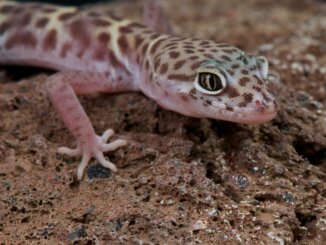
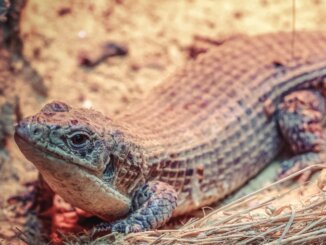


Just a question could you please add a note on outdoor enclosures to articles so that readers in areas with the appropriate climate (in this case Australia) will have a guide.
Thanks!
This has been added